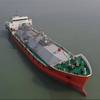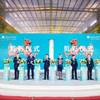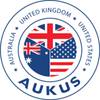The Coast Guard will hold a public meeting on May 9 in Cleveland seeking public assistance in further preventing aquatic nonindigenous species from entering the Great Lakes from the ballast water discharged from oceangoing vessels.
Specifically, the Coast Guard is exploring ways to manage the ballast water on vessels entering the Great Lakes that have so little water in their ballast tanks, they cannot pump it out and thus declare they are “No Ballast Onboard” vessels, or NOBOBs.
“Protecting the Great Lakes from invasive species is an important issue for the Coast Guard. I expect that working with the public will greatly assist us in developing effective and practicable management strategies for NOBOBs,” said Coast Guard Rear Adm. Thomas Gilmour, assistant commandant of marine safety, security and environmental protection. “Developing these strategies presents a complex challenge and requires close collaboration between the Coast Guard and the public.”
Since 1993, ballast water rules require ships to manage their ballast water. These ships account for an estimated 99 percent of all ballast water brought to the Great Lakes. Because of trade patterns, many vessels calling on the Great Lakes do so fully loaded with cargo, and thus in a NOBOB condition.
NOBOBs carry residual water and sediments in their ballast tanks that may contain harmful species. Once NOBOBs enter the Great Lakes and begin to unload inbound cargo and load outbound cargo, they often must take on Great Lakes water for safety and stability.
If the resulting mix of Great Lakes and residual water is subsequently discharged into the Great Lakes as the ship loads more cargo, the foreign organisms carried in the residual water may be introduced into the Great Lakes.
Currently, NOBOB vessels, which are fully loaded with cargo and have already emptied as much ballast water as is possible, can not conduct mid-ocean ballast water exchange to flush out potential invaders on their in-bound voyage. Thus, alternative approaches are needed to prevent the introduction of unwanted organisms by these vessels.
In addition to the public meeting, the Coast Guard has requested written comments from the public to help it develop NOBOB ballast water management strategies.
The May 9 meeting will be held from 9 a.m. to 4 p.m. at the Anthony J. Celebreeze Federal Building, 1240 East Ninth Street. The Coast Guard is also holding an evening public meeting at the same location from 5 to 7 p.m. for those that cannot attend the day meeting.
Subscribe for
Maritime Reporter E-News
Maritime Reporter E-News is the maritime industry's largest circulation and most authoritative ENews Service, delivered to your Email five times per week










